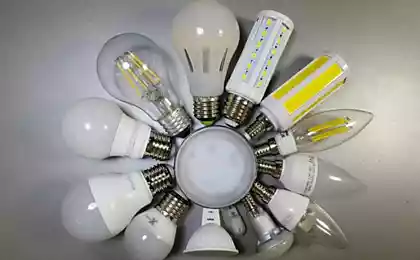629
Radex Lupin: When the light is possible to calculate
Why do we need it?Good question, by the way. The guys that deal with biology and other natural Sciences, tell us that the light to some extent affects our nervous system, eyesight, ability to concentrate and a bunch of other interesting things that define our state. If even easier – the wrong lighting for some time is able to bring the person to a state of limp and unable to concentrate even on something decent vegetable and Vice versa – quality light promotes excellent health and excellent health.
And what kind of light is best?Natural, what else. But if the Sun already went below the horizon, and you over the horizon to come back do not want to, have to, has to turn on a lightbulb. And it is all much more complicated. And to choose the best, will have to remember which parameters are luminous flux.
Brightness
Good old Wiki tells us that is the ratio of the light power emitted by the surface to the area of its projection on a plane perpendicular to the axis of observation. This case is measured in candelas per square meter and is even considered one of the main SI units. However, as a rule, for you need not. Illumination
It depends on it – whether you break your favorite eyes on their least favorite book or not. That same Wiki suggests that the illumination — light amount is equal to the ratio of the luminous flux on a small surface area to its area. Measured in Lux, and one Lux is equal to one lumen per square meter. To understand how much you need most of these suites for a comfortable job, there is such a sign
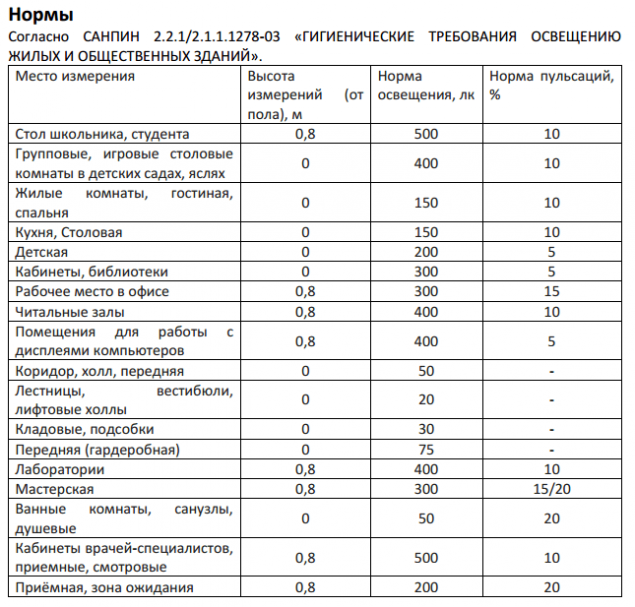
By the way, for reading this paper it is recommended that illumination of not less than 50 Lux. If you follow these recommendations, there is a big chance that your eyes will last you for several decades longer. In my opinion, quite a good reason to twist the excess honey ripple Coefficient
While you are under natural light, it we don't care. The only problem is that the current, which feed almost all artificial light sources is variable. Yes? And, you have permanent? I am glad for you. But for myself, not so much. Because alternating current, oddly enough, is actually a variable and all these ripple anyway noticeable to the human eye. And despite the fact that the blinking we do not see (even that was not enough), they are not weak we are affected. Doctors do not get tired to tell us that the high rate of pulsation can result in fatigue, tiredness, poor sleep, decreased performance and other unpleasant things that we would like to avoid. Therefore, the less flicker your light – the better. However, we have, in Russia it is believed that all this applies only to pulsations at frequencies up to 300 Hz. Supposedly above all that, the human eye and brain are not perceived at all and does not interfere, and therefore – at least morgause color rendering Index
Thing is not for us is important, but without it still can, especially if you are working with a camera. Roughly speaking, this index shows the degree of color matching some of the body appears at any particular type of lighting. So, if in pictures, your favorite red t-shirt looks a little green, this is it. With the settings figured out? Now, let's try something to measure. First, though, will have to decide. To determine the brightness we need ercomer for light – meter to determine the ratio of ripple –pulser. To carry a box of three gadgets is awkward... But is there anything that will allow us to measure all at once? Yeah! There!
What do you have?Luxmeter-pulser-ercomer Radex Lupin from the company Dadzhet allows high accuracy to measure both the first and second, and third. And he is included in the hand and easy to carry. And he is able to determine the pulsation frequency. And he flick of the wrist, can turn into a portable OSC... however, more on that later. In the meantime, let him at last look


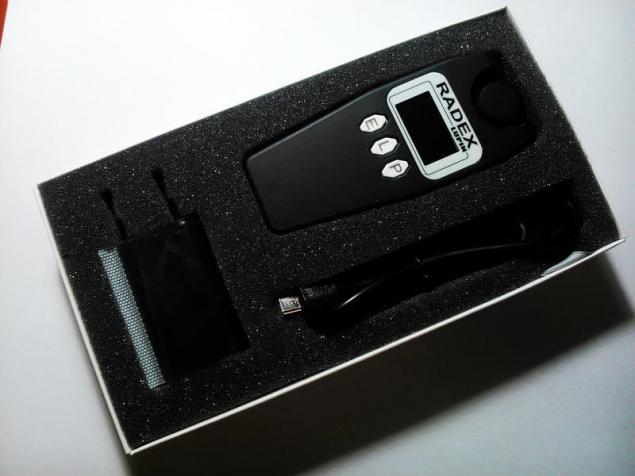
And as for the meter, so it is quite small in size. This can be in the pocket of my jeans to put, nothing will become. I wonder how you turn it on?
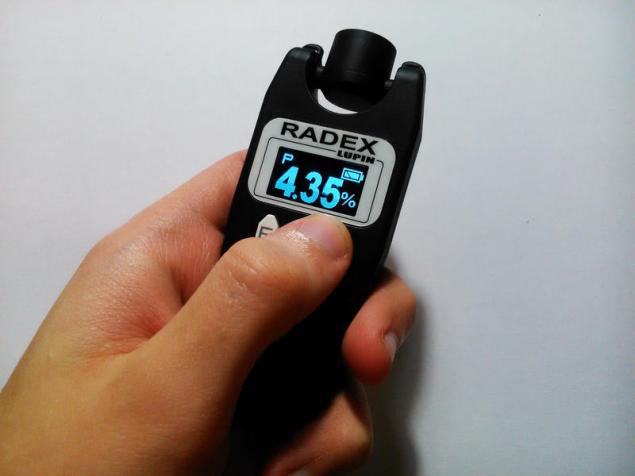
Just click on any of the three buttons as he starts to show something. Okay, let's put it aside for dessert and see what else is there.

Charging. The usual 220 AC → DC adapter 5, according to the inscriptions on it, as much as a whole amp. Nothing unusual, but nice, because it is cheaper for even some phones come with only one cord.
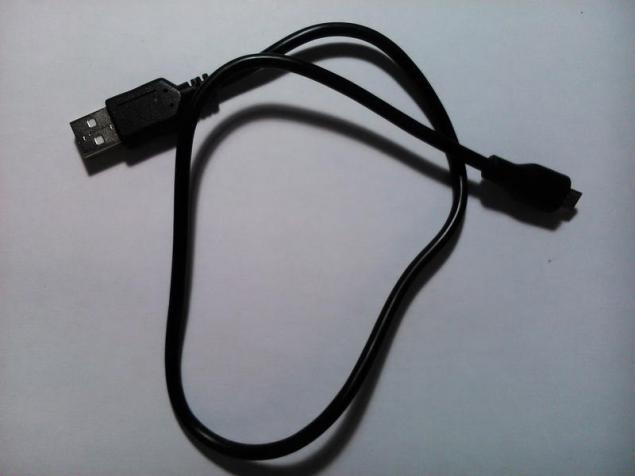
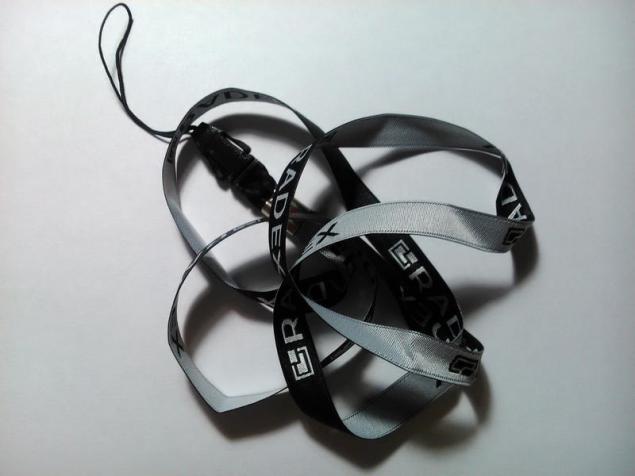
The light meter on a string – it's actually convenient because to carry it between the measurements in hand, where some kind of sheet with the results... overall, a pleasant thing.
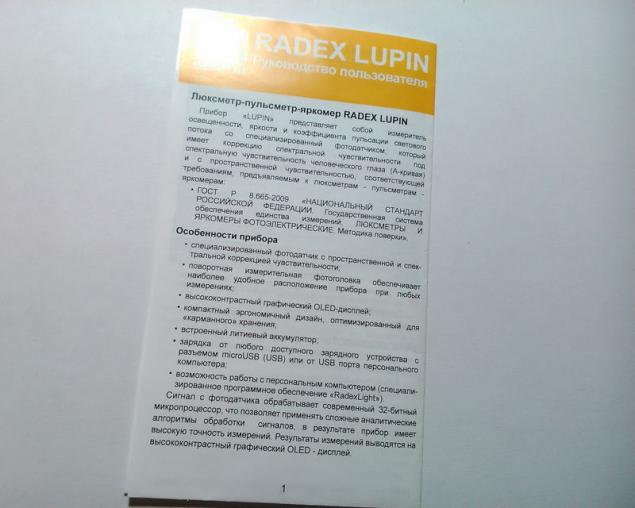

For a start, specifications:
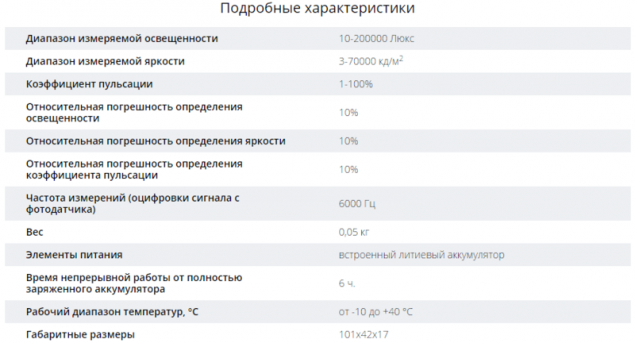
If you believe them, it turns out that Lupin was never a toy, and quite a decent Suite (and other) meter. At least, not creeping out beyond the atmosphere to reach the upper limits will be difficult (illumination out of the atmosphere is approximately 135000 Suite), a lithium battery is going to save us from having to look through the house batteries. Can't wait, when cheap wireless mouse will start to put a Li.
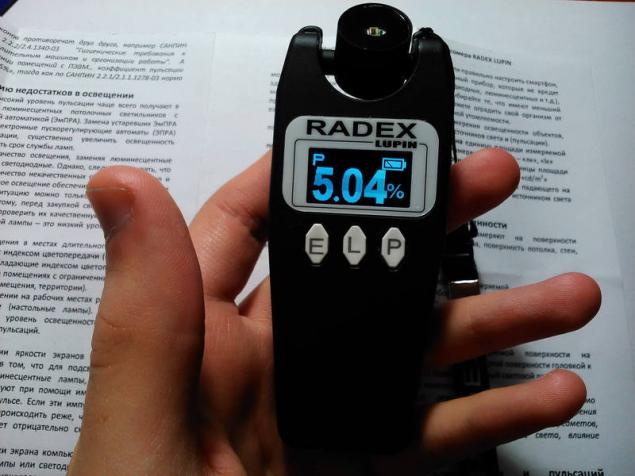
And once again – the device is madly small. And he has quite a nice surface with a soft-touch coating. That is, to hold such a convenient and nice. Management here is simple to ugliness: on the front panel with just three buttons. The first includes the meter, the second – Larcomar, and the third (and what it still remains) – pulser. And if you don't press buttons as much as 70 seconds, the device will turn off and this is not very convenient, you never know what do I need to measure, the more that recharging the battery is not too difficult, even if you forgot to turn off the device. Okay, let us leave this matter to the conscience of the developer and look at the display
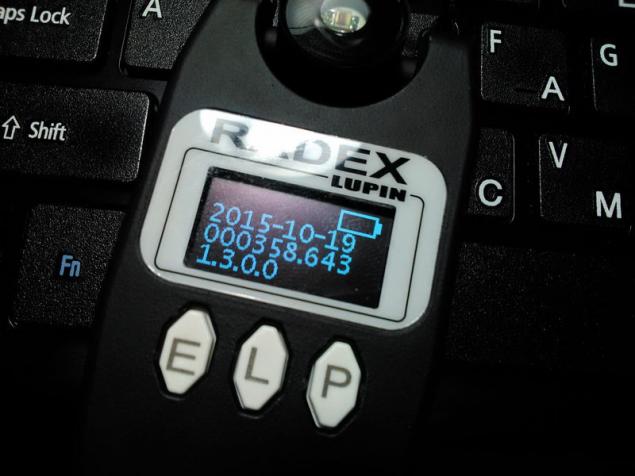
It is we've got OLED, inverted, and even graphics. Just a holiday, especially after a similar wh1602 — like and disgusting list displayicon. In the top bar we have the present mode indicator (E – Light, L Is the Brightness, P – Surge) and the battery indication. Why's he got a diagonal strip from not very clear, but apparently, has become charged. At the bottom of the screen the measurement units and display "X1000", alluding to the fact that the result we have to multiply by the thousands, because the screen is different not fit. By the way, to get the same picture as me, hold the two outer keys — look at the firmware number and release date. Austere, functional, nothing more.

To use the device just. Push the button that is responsible for mode, guide the head of the light meter to the light source where you want to measure light and get the result. The head — turning, twisting her anywhere, and it is fixed in three positions: "up", "we" and "us". By the way, if light is not enough to obtain reliable data, at the top bar in addition there will be an icon that looks suspiciously like the letter "O". Understood? Let us then anything measurable? For example, the illuminance of my Desk:
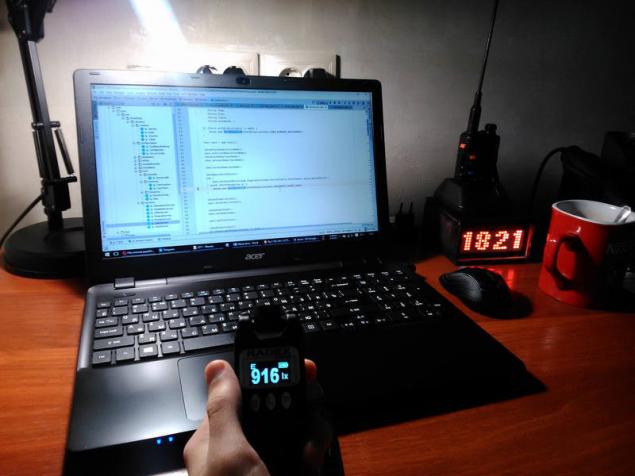
Almost kilolux! In General, it seems to be true, 20W fluorescent bulbs, but still not advanced beyond the horizon the sun... In General, work for me should be light. And look at the ripple?
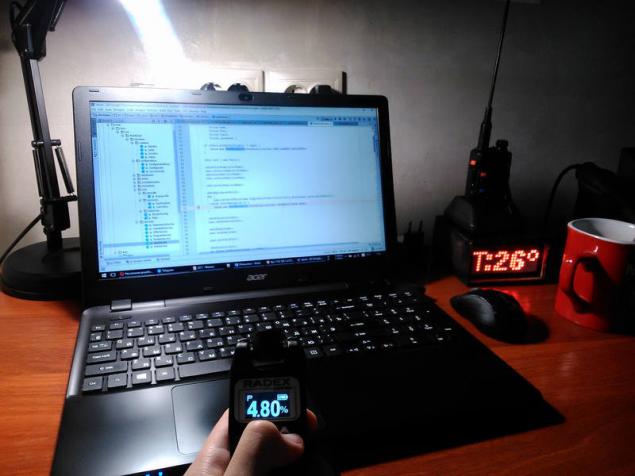
It's not as good. SNiP coefficient ripple in the room with the computers should not exceed 5%. I have it right at the upper limit... Maybe to change a light bulb?
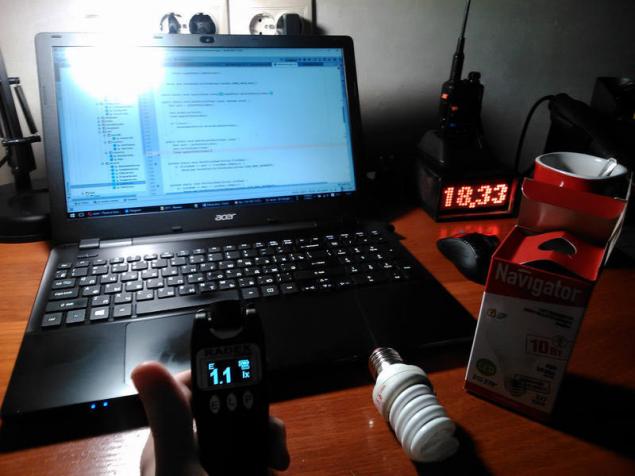

Well, led 10-Wuttke from Navigator. The same kilolux, but pulsation was clearly less. I wonder if I'll feel better for a while?
What we have with the upper light in the bedroom?
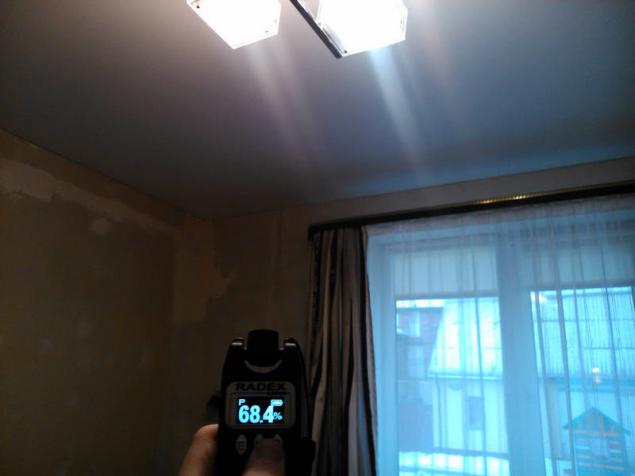
Hello, Chinese nedokoncena. Now they just need as soon as possible to change to something decent.
And on the street?
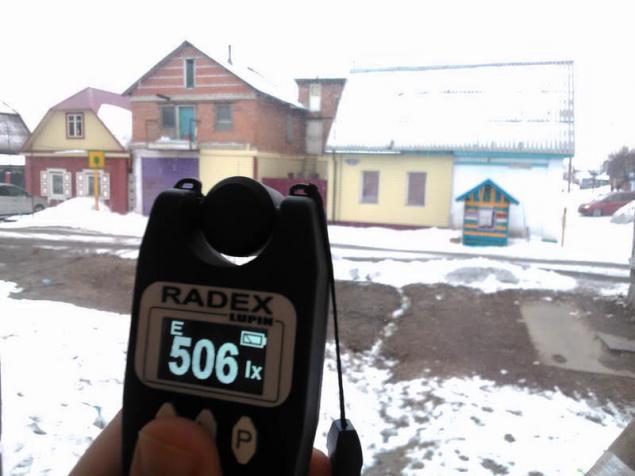
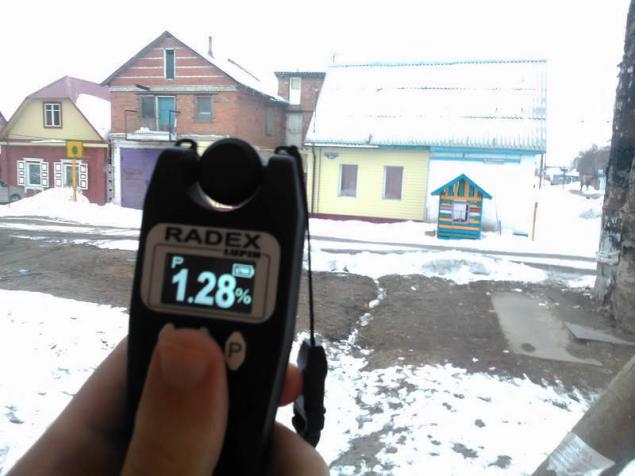
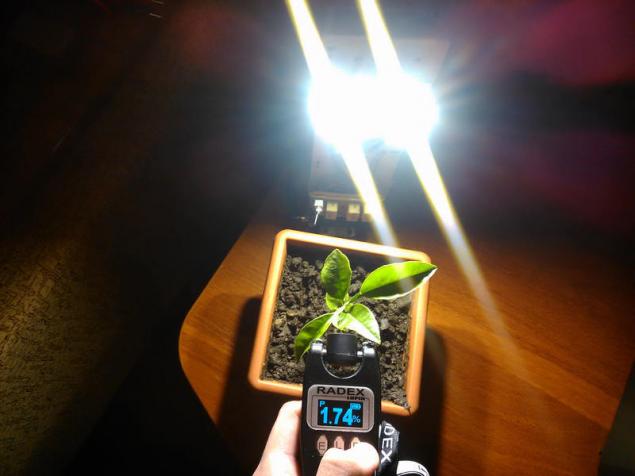
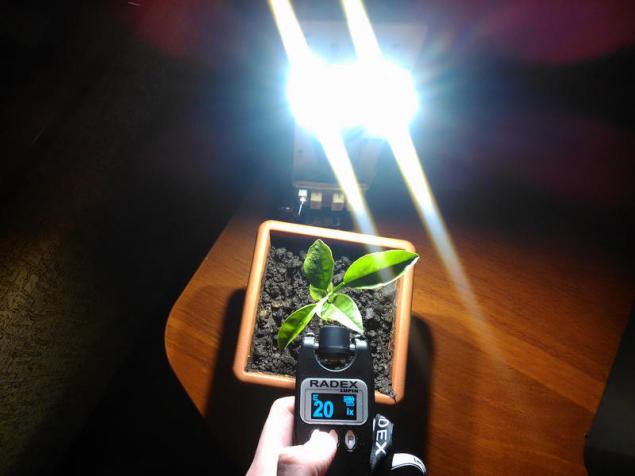
This is my homemade led svetilnik. According to testimony, the orange should be happy. However, he actually is growing quite fast.

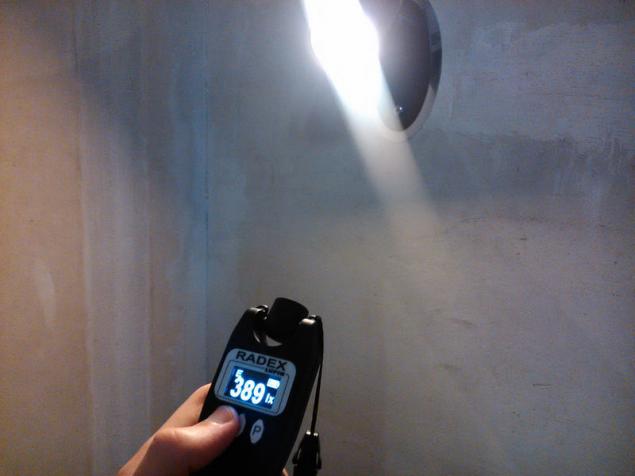
Okay, poked, looked, wrote down in a notebook what light bulb you need to change is not so interesting. Let's try to get a little more data? Take our meter and connect to the laptop via USB
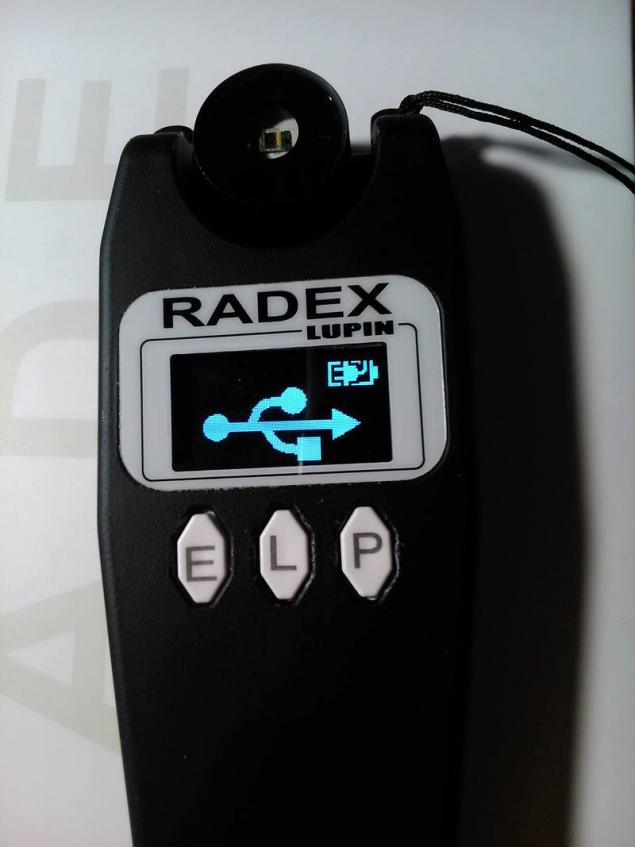
Excellent, Lupin realized what he should do, in case it started charging. But Windows him much did not pay attention... Weird, for some reason I was sure that he will come up like a flash drive and will offer something to deliver. Then have to walk to the site of Dadzhet and download this program
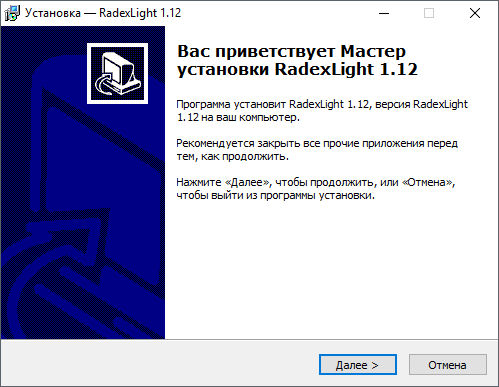

FTDI? That is, the meter builds himself HID, and just pretends to be COM port? Looks like I just had an interesting idea... Well, let's wait. And yet – run the program
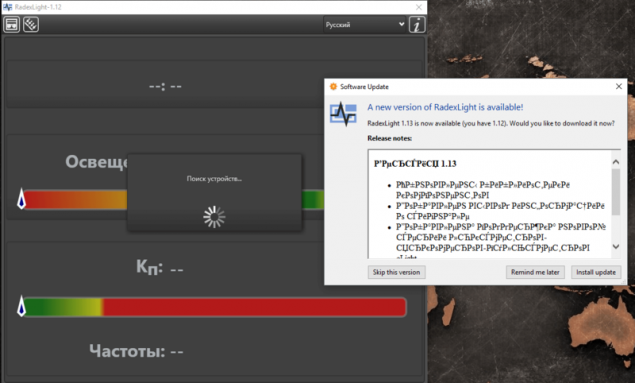

Here, it's all right now. Startup froze

Clearly. I wonder what standards correspond to the color stripes?

They call it professional mode. Well, in General, the way it is, at least here you can see a couple of interesting graphs. By the way, after "Waveform" my idea was strengthened in the desire to be realized. Would not forget. Let's look at what frequency pulsing my table lamp?
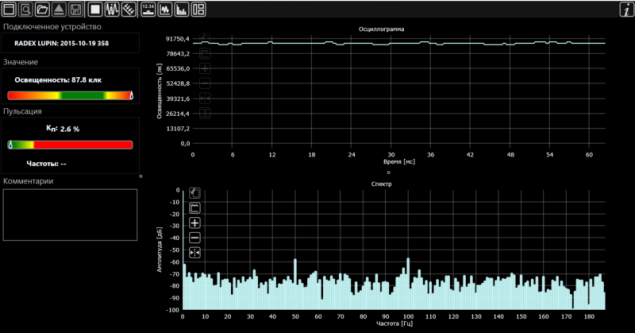
Spikes at 50 and 100 Hz are clearly visible, but they are clearly not enough to consider the case surge.
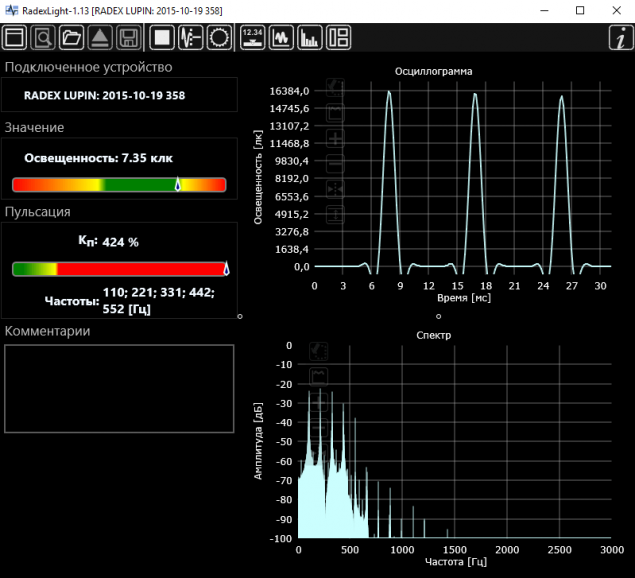
Chinese lantern with Simiriundui brightness. In the chandelier to hang not.
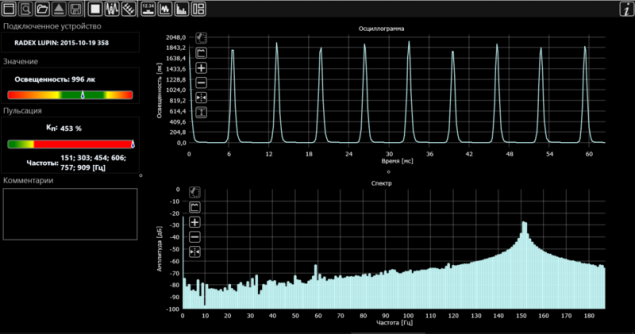
Yes, dynamic display in the shift registers is unusual.
By the way, Dadzhet actively encourages the use of Lupin as a means to test monitors and other screens. I happen to be at hand whether the monitor or the screen. Let him also click?
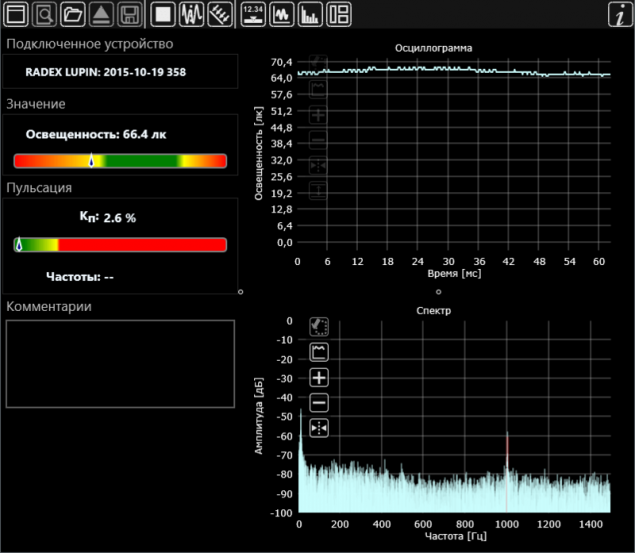
A good monitor. According to spectral analysis, the PWM frequency he has somewhere in the region of kHz, while everything above 300 Hz we are interested in a little. You can take a picture almost static.
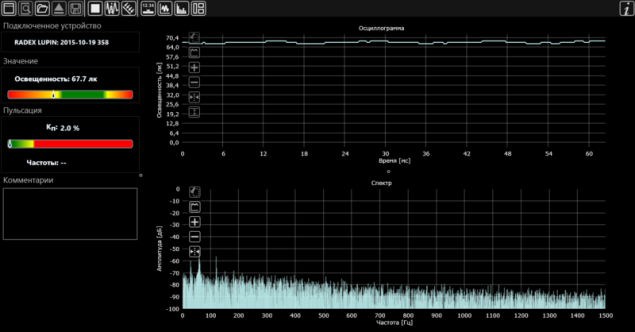
The phone is also doing well, the light meter then I do not see any bursts. It seems that the night gatherings in the Telegram is a little hurt my eyes. I wonder what would happen if...
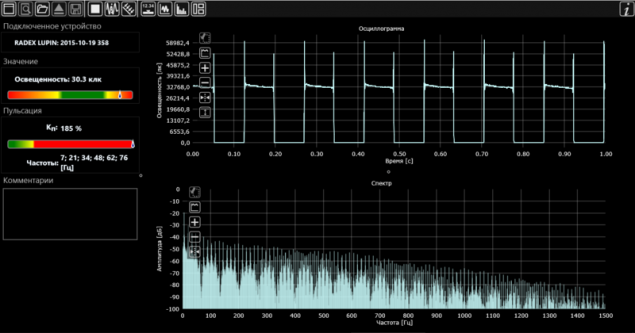
However, the picture is familiar? I flashlight in strobe mode translated. Well, what I wanted, and got. The truth is, I still want to test one of my theory... Let's crack open the device? To do this, simply Unscrew the three screws on the back and quietly take it off. But at the same time hats off to the developer of the gadget that I guessed not stuff the enclosure with latches

So, while I like the charge looks neat, the photo sensor is removed, and the elements, even well sealed. However, the battery I was expecting to see a square and not round. Remove the case and overturn the charge
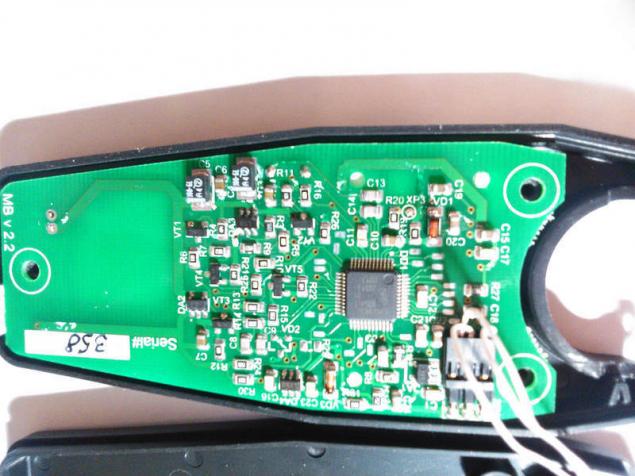
It seems that the entire meter is built on a single 32-bit ARM microcontroller and a pile of trim. By the way, where microsco from FTDI? Now you only have to look closely at the contacts for major and poke them with a voltmeter.
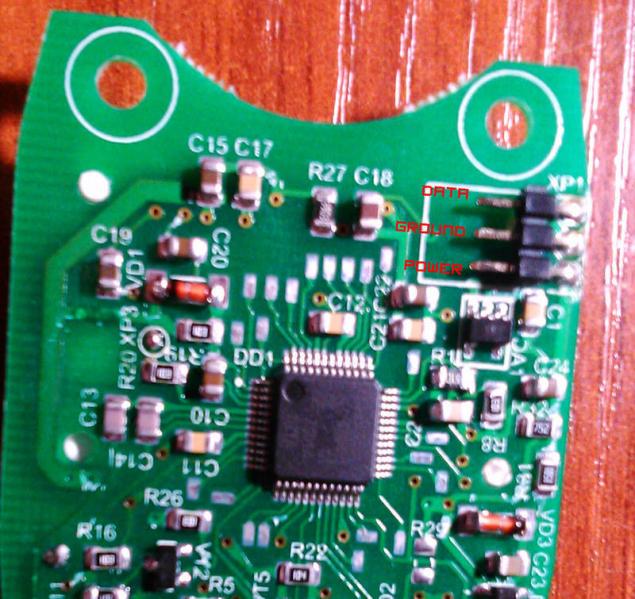
It seems that the Pinout looks exactly like that. Let's take the leg data of some meander?
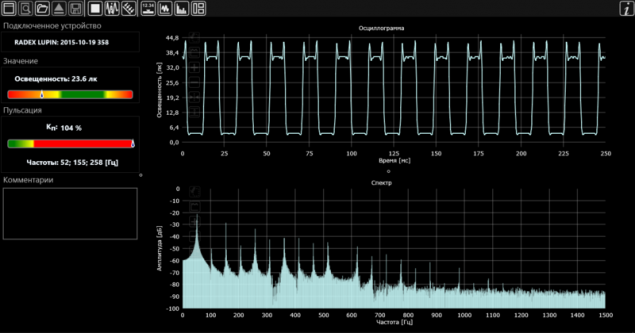
Filed a meander – received square wave, or what is trying to be. Now count up the antenna
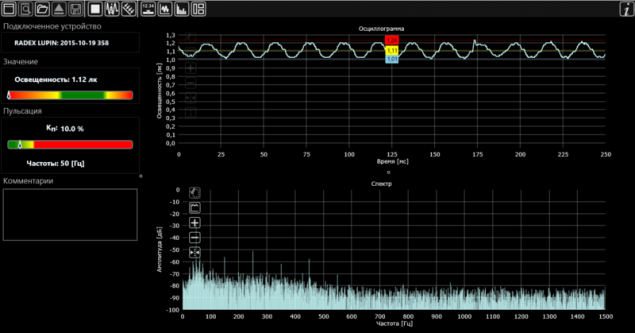
Yeah, tip-off at 50 Hz it eats. All this means that the input from the photo sensor voltage is applied (and what you want from a photodiode?), and all the rest involved ARM controller. That is, if you bring the leg data somewhere outside the case, we can get tolerably well employed oscilloscope. How cool is that? And since the data coming on the COM port, nothing prevents us to cling to him and look at what there is

So data leg grounded

And so, it is the same, but drawn to the food, which, by the way, the whole scheme 5.00 volts. It remains only to understand what is contained in these four bytes of data (and it seems to me that there are values of ADC-shki and checksum), write a small receiver of this information, which will not count them in the suites and pocket oscilloscope is ready! Perhaps I'll get to it when you have time. In the meantime, collect the device back in and turn the screw.
And why?It turns out that all your tests, Radex Lupin is a great Suite, bright and, most importantly, pulsemeter, which will allow you to choose the high-quality lighting in the room to determine the degree of conformity of the monitor to choose a really good bulb out of a dozen and extend the life of their own, as the necessary eyes. But if you have hands grow from the right place – you can use Lupin as a entry level scope, and much more. By the way, to use it can be quite inexpensive – the retail price of the meter will amount to 4900 rubles, which is much smaller than any professional light meter, made to the state. published
P. S. And remember, only by changing their consumption — together we change the world! ©
Join us in Facebook , Vkontakte, Odnoklassniki
Source: geektimes.ru/company/dadget/blog/272768/
And what kind of light is best?Natural, what else. But if the Sun already went below the horizon, and you over the horizon to come back do not want to, have to, has to turn on a lightbulb. And it is all much more complicated. And to choose the best, will have to remember which parameters are luminous flux.
Brightness
Good old Wiki tells us that is the ratio of the light power emitted by the surface to the area of its projection on a plane perpendicular to the axis of observation. This case is measured in candelas per square meter and is even considered one of the main SI units. However, as a rule, for you need not. Illumination
It depends on it – whether you break your favorite eyes on their least favorite book or not. That same Wiki suggests that the illumination — light amount is equal to the ratio of the luminous flux on a small surface area to its area. Measured in Lux, and one Lux is equal to one lumen per square meter. To understand how much you need most of these suites for a comfortable job, there is such a sign

By the way, for reading this paper it is recommended that illumination of not less than 50 Lux. If you follow these recommendations, there is a big chance that your eyes will last you for several decades longer. In my opinion, quite a good reason to twist the excess honey ripple Coefficient
While you are under natural light, it we don't care. The only problem is that the current, which feed almost all artificial light sources is variable. Yes? And, you have permanent? I am glad for you. But for myself, not so much. Because alternating current, oddly enough, is actually a variable and all these ripple anyway noticeable to the human eye. And despite the fact that the blinking we do not see (even that was not enough), they are not weak we are affected. Doctors do not get tired to tell us that the high rate of pulsation can result in fatigue, tiredness, poor sleep, decreased performance and other unpleasant things that we would like to avoid. Therefore, the less flicker your light – the better. However, we have, in Russia it is believed that all this applies only to pulsations at frequencies up to 300 Hz. Supposedly above all that, the human eye and brain are not perceived at all and does not interfere, and therefore – at least morgause color rendering Index
Thing is not for us is important, but without it still can, especially if you are working with a camera. Roughly speaking, this index shows the degree of color matching some of the body appears at any particular type of lighting. So, if in pictures, your favorite red t-shirt looks a little green, this is it. With the settings figured out? Now, let's try something to measure. First, though, will have to decide. To determine the brightness we need ercomer for light – meter to determine the ratio of ripple –pulser. To carry a box of three gadgets is awkward... But is there anything that will allow us to measure all at once? Yeah! There!
What do you have?Luxmeter-pulser-ercomer Radex Lupin from the company Dadzhet allows high accuracy to measure both the first and second, and third. And he is included in the hand and easy to carry. And he is able to determine the pulsation frequency. And he flick of the wrist, can turn into a portable OSC... however, more on that later. In the meantime, let him at last look



And as for the meter, so it is quite small in size. This can be in the pocket of my jeans to put, nothing will become. I wonder how you turn it on?

Just click on any of the three buttons as he starts to show something. Okay, let's put it aside for dessert and see what else is there.

Charging. The usual 220 AC → DC adapter 5, according to the inscriptions on it, as much as a whole amp. Nothing unusual, but nice, because it is cheaper for even some phones come with only one cord.


The light meter on a string – it's actually convenient because to carry it between the measurements in hand, where some kind of sheet with the results... overall, a pleasant thing.


For a start, specifications:

If you believe them, it turns out that Lupin was never a toy, and quite a decent Suite (and other) meter. At least, not creeping out beyond the atmosphere to reach the upper limits will be difficult (illumination out of the atmosphere is approximately 135000 Suite), a lithium battery is going to save us from having to look through the house batteries. Can't wait, when cheap wireless mouse will start to put a Li.

And once again – the device is madly small. And he has quite a nice surface with a soft-touch coating. That is, to hold such a convenient and nice. Management here is simple to ugliness: on the front panel with just three buttons. The first includes the meter, the second – Larcomar, and the third (and what it still remains) – pulser. And if you don't press buttons as much as 70 seconds, the device will turn off and this is not very convenient, you never know what do I need to measure, the more that recharging the battery is not too difficult, even if you forgot to turn off the device. Okay, let us leave this matter to the conscience of the developer and look at the display

It is we've got OLED, inverted, and even graphics. Just a holiday, especially after a similar wh1602 — like and disgusting list displayicon. In the top bar we have the present mode indicator (E – Light, L Is the Brightness, P – Surge) and the battery indication. Why's he got a diagonal strip from not very clear, but apparently, has become charged. At the bottom of the screen the measurement units and display "X1000", alluding to the fact that the result we have to multiply by the thousands, because the screen is different not fit. By the way, to get the same picture as me, hold the two outer keys — look at the firmware number and release date. Austere, functional, nothing more.

To use the device just. Push the button that is responsible for mode, guide the head of the light meter to the light source where you want to measure light and get the result. The head — turning, twisting her anywhere, and it is fixed in three positions: "up", "we" and "us". By the way, if light is not enough to obtain reliable data, at the top bar in addition there will be an icon that looks suspiciously like the letter "O". Understood? Let us then anything measurable? For example, the illuminance of my Desk:

Almost kilolux! In General, it seems to be true, 20W fluorescent bulbs, but still not advanced beyond the horizon the sun... In General, work for me should be light. And look at the ripple?

It's not as good. SNiP coefficient ripple in the room with the computers should not exceed 5%. I have it right at the upper limit... Maybe to change a light bulb?


Well, led 10-Wuttke from Navigator. The same kilolux, but pulsation was clearly less. I wonder if I'll feel better for a while?
What we have with the upper light in the bedroom?

Hello, Chinese nedokoncena. Now they just need as soon as possible to change to something decent.
And on the street?




This is my homemade led svetilnik. According to testimony, the orange should be happy. However, he actually is growing quite fast.


Okay, poked, looked, wrote down in a notebook what light bulb you need to change is not so interesting. Let's try to get a little more data? Take our meter and connect to the laptop via USB

Excellent, Lupin realized what he should do, in case it started charging. But Windows him much did not pay attention... Weird, for some reason I was sure that he will come up like a flash drive and will offer something to deliver. Then have to walk to the site of Dadzhet and download this program


FTDI? That is, the meter builds himself HID, and just pretends to be COM port? Looks like I just had an interesting idea... Well, let's wait. And yet – run the program


Here, it's all right now. Startup froze

Clearly. I wonder what standards correspond to the color stripes?

They call it professional mode. Well, in General, the way it is, at least here you can see a couple of interesting graphs. By the way, after "Waveform" my idea was strengthened in the desire to be realized. Would not forget. Let's look at what frequency pulsing my table lamp?

Spikes at 50 and 100 Hz are clearly visible, but they are clearly not enough to consider the case surge.

Chinese lantern with Simiriundui brightness. In the chandelier to hang not.

Yes, dynamic display in the shift registers is unusual.
By the way, Dadzhet actively encourages the use of Lupin as a means to test monitors and other screens. I happen to be at hand whether the monitor or the screen. Let him also click?

A good monitor. According to spectral analysis, the PWM frequency he has somewhere in the region of kHz, while everything above 300 Hz we are interested in a little. You can take a picture almost static.

The phone is also doing well, the light meter then I do not see any bursts. It seems that the night gatherings in the Telegram is a little hurt my eyes. I wonder what would happen if...

However, the picture is familiar? I flashlight in strobe mode translated. Well, what I wanted, and got. The truth is, I still want to test one of my theory... Let's crack open the device? To do this, simply Unscrew the three screws on the back and quietly take it off. But at the same time hats off to the developer of the gadget that I guessed not stuff the enclosure with latches

So, while I like the charge looks neat, the photo sensor is removed, and the elements, even well sealed. However, the battery I was expecting to see a square and not round. Remove the case and overturn the charge

It seems that the entire meter is built on a single 32-bit ARM microcontroller and a pile of trim. By the way, where microsco from FTDI? Now you only have to look closely at the contacts for major and poke them with a voltmeter.

It seems that the Pinout looks exactly like that. Let's take the leg data of some meander?

Filed a meander – received square wave, or what is trying to be. Now count up the antenna

Yeah, tip-off at 50 Hz it eats. All this means that the input from the photo sensor voltage is applied (and what you want from a photodiode?), and all the rest involved ARM controller. That is, if you bring the leg data somewhere outside the case, we can get tolerably well employed oscilloscope. How cool is that? And since the data coming on the COM port, nothing prevents us to cling to him and look at what there is

So data leg grounded

And so, it is the same, but drawn to the food, which, by the way, the whole scheme 5.00 volts. It remains only to understand what is contained in these four bytes of data (and it seems to me that there are values of ADC-shki and checksum), write a small receiver of this information, which will not count them in the suites and pocket oscilloscope is ready! Perhaps I'll get to it when you have time. In the meantime, collect the device back in and turn the screw.
And why?It turns out that all your tests, Radex Lupin is a great Suite, bright and, most importantly, pulsemeter, which will allow you to choose the high-quality lighting in the room to determine the degree of conformity of the monitor to choose a really good bulb out of a dozen and extend the life of their own, as the necessary eyes. But if you have hands grow from the right place – you can use Lupin as a entry level scope, and much more. By the way, to use it can be quite inexpensive – the retail price of the meter will amount to 4900 rubles, which is much smaller than any professional light meter, made to the state. published
P. S. And remember, only by changing their consumption — together we change the world! ©
Join us in Facebook , Vkontakte, Odnoklassniki
Source: geektimes.ru/company/dadget/blog/272768/
7 most useful books on self-development that will help you to build a life and achieve success
How to make money in crisis— business idea: installation home mini-saunas







